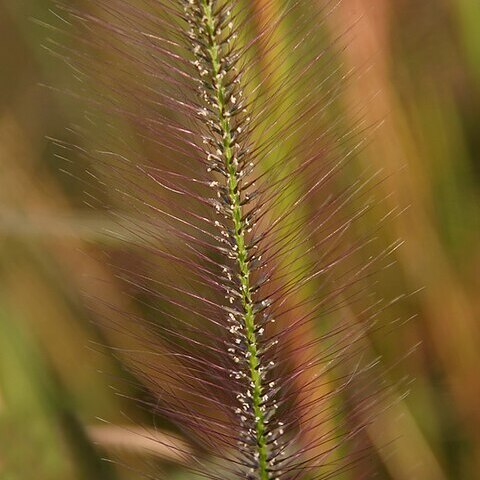Annuals or rarely perennials, caespitose, bisexual. Ligule an eciliate to ciliate membrane. Inflorescence a single raceme or spike (a narrow 'bottlebrush'), with spikelets arranged on all sides. Spikelets pedicellate to subsessile (not in Australia), laterally compressed or terete, with 1 bisexual floret, falling with the glumes; rachilla terminating at bisexual floret. Callus pubescent or puberulous. Glumes 2, similar, ±equal, exceeding the floret, narrow, tipped by long capillary awns, membranous to cartilaginous, dorsally rounded, 1-nerved. Lemma awnless, carinate, 1-or 3-nerved. Palea almost equalling lemma, nerveless. Styles fused. Caryopsis longitudinally grooved; hilum short.
Annuals or sometimes perennials. Leaf-blades flat, broadest at the base and subamplexicaul; ligule a short membranous rim. Inflorescence a delicate “ bottle-brush ” spike, the spikelets subsessile on the main axis. Spikelets single, all alike, linear-lanceolate, with or without a stipitate basal callus; glumes subequal, lanceolate to narrowly lanceolate, membranous, 1-nerved, each tipped by a long slender awn (that of the lower glume usually the longer) prettily tinged with violet; lemma usually 1/3–1/2 as long as the spikelet, lanceolate, hyaline, 1-nerved; stamens 3. Caryopsis linear-lanceolate, almost as long as the glumes at maturity.
Spikelets 1-flowered, linear-lanceolate, with or without a stipitiform basal callus; glumes well developed, subequal, membranous, 1-nerved, longer than the floret, tipped by a long slender awn (that of the inferior glume usually the longer); lemma hyaline, 1-nerved, awnless.
Inflorescence a delicate 'bottle-brush' false raceme (though appearing to be a true raceme); racemelets subsessile, deciduous, comprising a single spikelet.
Caryopsis linear-lanceolate, almost as long as the glumes at maturity.

